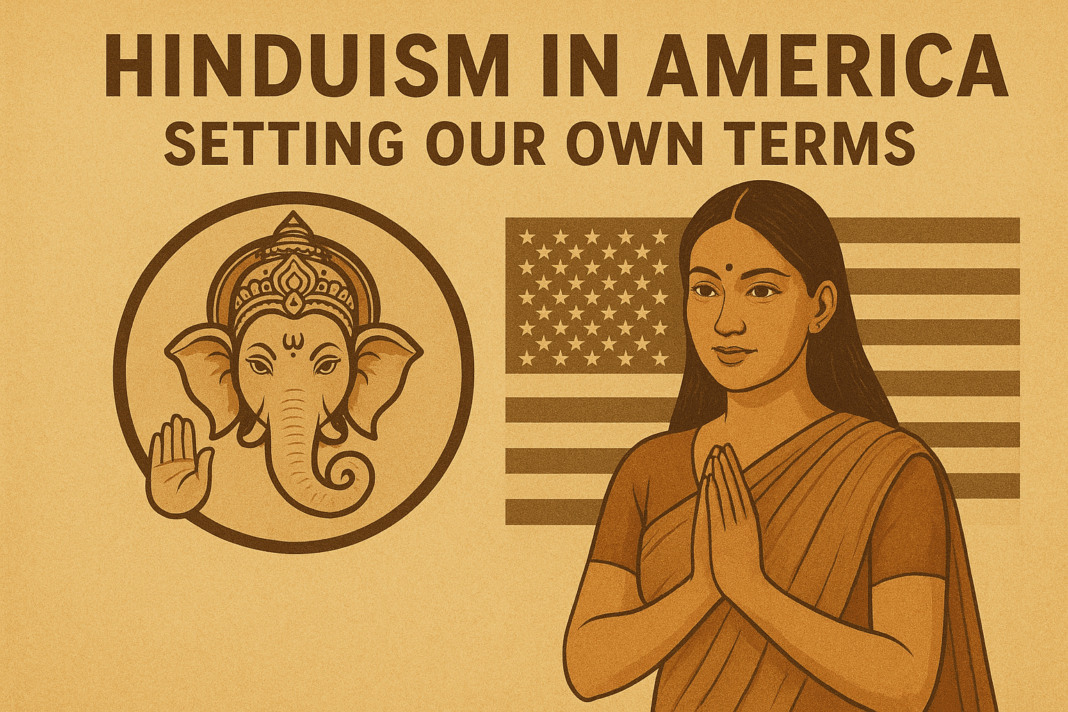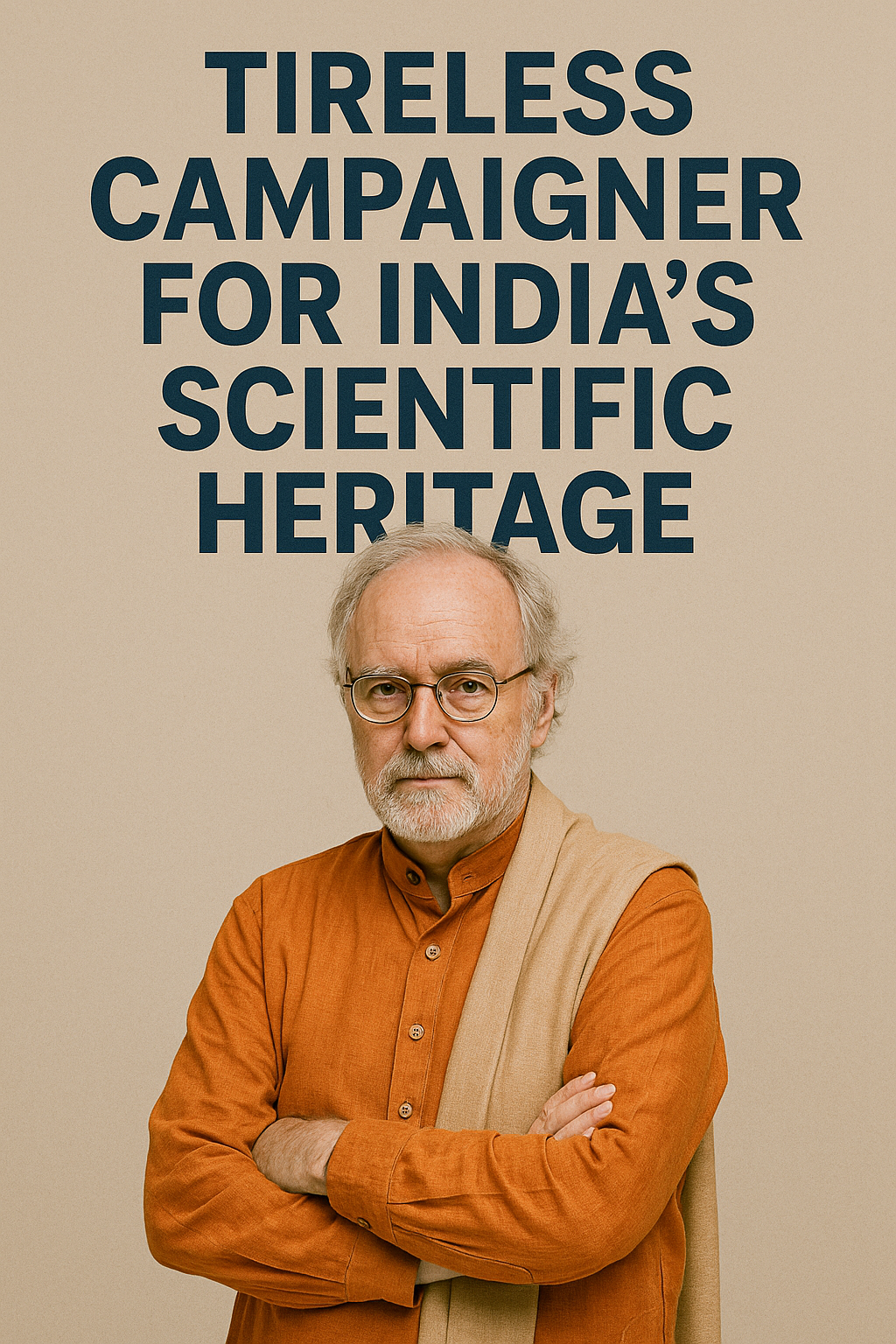If you have read Aditi Bannerjee’s recent article, “The Hyphenated Hindu”, in Outlook magazine, you’ve likely concluded that Hinduism faces great peril in America. Perhaps, this is so. But for me, growing up Hindu in America, even in small, pious, Christian, Midwestern, Bible-belt America, was a privilege, not a curse. Thanks to the efforts of my parents and other Hindus in the community, we formed a Hindu school and took various trips to Gurukulams. Thanks to the open-minded curiosity of our neighbors and friends, we, unthreatened, could deepen their understanding of Hinduism, as well as our own, whenever they had any questions. Thanks to the new environment, we could choose which aspects of our great religion — and our great country — to hybridize. People trusted us to explain our religion, because they recognized that it was our lived experience. I realize that mine might be a rare, lucky story, a product of parental interest and benign social neglect. Regardless, my experience in the heart of America taught me to value both my religion and my society for the openness with which they allowed me to explore one another.
When I arrived in college, however, my environment changed. In essence, it now resembled the environment Aditi described in her article. Before, it was sufficient for me to explain that all the usual negative buzzwords in Hinduism — caste, chauvinism, and ritualism — were not part of Hinduism as it was practiced by 90% of those I knew. Now, I had to justify this observation by distancing myself from those buffoons — whom I had never met or seen — who still practiced regressive Hinduism. Before, it was sufficient for me to explain that Hinduism was a religion of tolerance; now, I had to swallow my irritation as others used a few horrible exceptions to tar Hinduism’s record. Worst, I could not simply explain key concepts of my religion to others using whatever words were handy; suddenly, labels had become all-important. Was I an Advaitist or Dvaitist? A Vaishnavite or Shaivite? A Congress “secularist” or a BJP “fundamentalist”? Because my parents had maintained neutrality (for our town’s Hindus, at least) between these often-pointless labels, they had unconsciously taught me to see the good in each. Such nuance found no home between these simple homogenizations, which took on a life of their own. Soon, I found myself divided against myself, and against my colleagues; where once my diversity was my strength, a simple act of naming had transformed it into my weakness.
The problem of labeling has a long history in India. The Vedic rishis taught us to avoid it with their characterization of God as neti, neti (not this, nor that). It was later thrust upon us in the form of a clumsy word — Hindu — which was little more than a geographic signifier. Later, it divided our various sects into different “religions” as it was manipulated to mean caste and ritualism. Later still, labeling helped to divide India between the “backward” and the “forward” and continues to create new fissures. And the problem’s scope is endless. When Westerners define religion, they often mean non-rational faith; by this label, Hinduism only occasionally qualifies. Religious scholars now try to find ways of “including” Hinduism as one of the “religions” worth study. It’s hard not to see the slur, as if the oldest contiguously surviving and flourishing spiritual/cultural system in history “needs” their classifications to prove worthy of study. A well-meaning student of religion once informed me “there is no such thing as Hinduism, only ‘Hinduisms’.” I was so conflicted that I couldn’t even protest. The warning of the rishis never seemed more apt: labelling, whether inspired by self-exorcism or scholarly creativity, has wreaked havoc.
Labels also underlie the difference between Aditi’s experience and my own. A benign environment allowed me to pick and discard my labels at will; a hostile environment forced her and other Hindus to adopt those of others. In the hostile environment, one cannot be a “devout Hindu” and yet a “believer in secularism”, despite the fundamentally pluralistic nature of Hinduism. One cannot simply hate bigotry; one must also hate the “Sangh Parivar”, and find faults even in its most humanistic goals. This self-imposed exile by moderates only leaves the Sangh in the hands of even more extreme individuals, ironically perpetuating the cycle of alienation.
And the labels are not just divisive; frequently, they are untrue. What is “true” Hinduism: what Hindus practice or what we hear of our practice from scholars of dubious integrity? How is it “secular” to engineer governmental take-over of temples? With a combination of labelling and deceit, the detractors of Hinduism have set the terms of discourse and kept alive the policy of divide-and-rule. They have so twisted the meaning of words that a former geographic signifier — Hindu — now means nothing more than caste, ritualism, and whatever else negative can be attached to it. There can be no positive new formulations as long as others control our fundamental name and its attendant implications. One need only examine the record of the Ramakrishna Mission, Sri Aurobindo Society, the Arya Samaj and Sikhism, all of which were born in the wide arena of Hinduism, and all of which eventually denied their Hindu-ness. None wants to be associated with this pariah word. In such an environment, even innocuous labels like “Hindu-American” will only serve to further deracinate the very body of Hinduism proper we are trying to save.
New labels will avail us nothing; it is the very act of labelling, especially when it is steeped in deceit, that we must challenge. For this problem of labeling to be ameliorated, we must do many things. First and foremost, we must challenge the labels. What do people mean by “Hindutva?” Do they fix a value for Hindu traditions? What do they mean by “Hindu revivalists?” Do they mean we fight to modernize our religion and make it relevant? Each question will force the labelers to explain themselves and expose the deceits implicit in many of their “guilt-by-association” strategies. Second, we must pick new labels that accurately characterize us as individuals. Most of us are pluralists; most of us are tolerant. Many are humanists. We must focus on our individual non-classifiability, as well as that of any movements we might support. The bottom line is that we should set our own agenda, not agree to pre-arranged categories that bear little resemblance to reality.
In the real world, we cannot simply do away with them, so we should ensure that we do our work by setting them ourselves. We need to challenge, overturn, and redefine them when they divide deceitfully. We must control, at the very least, the way our own positions and ideas are discussed. Otherwise, even adding new labels will be a futile exercise. Without a more aggressive approach, “Hindu-Americans”, like so many reformers before them, will soon grow ashamed of the “Hindu” their names were designed to protect.
28th January, web edition.
The article is available online at:
http://www.outlookindia.com/full.asp?fodname=20040128&fname=aditi&sid=1
Author:
Raman Khanna, hailing from Ohio and a former student of religious studies at Northwestern University in Evanston, is presently pursuing his medical studies in Chicago, Illinois (USA).
Raman Khanna


